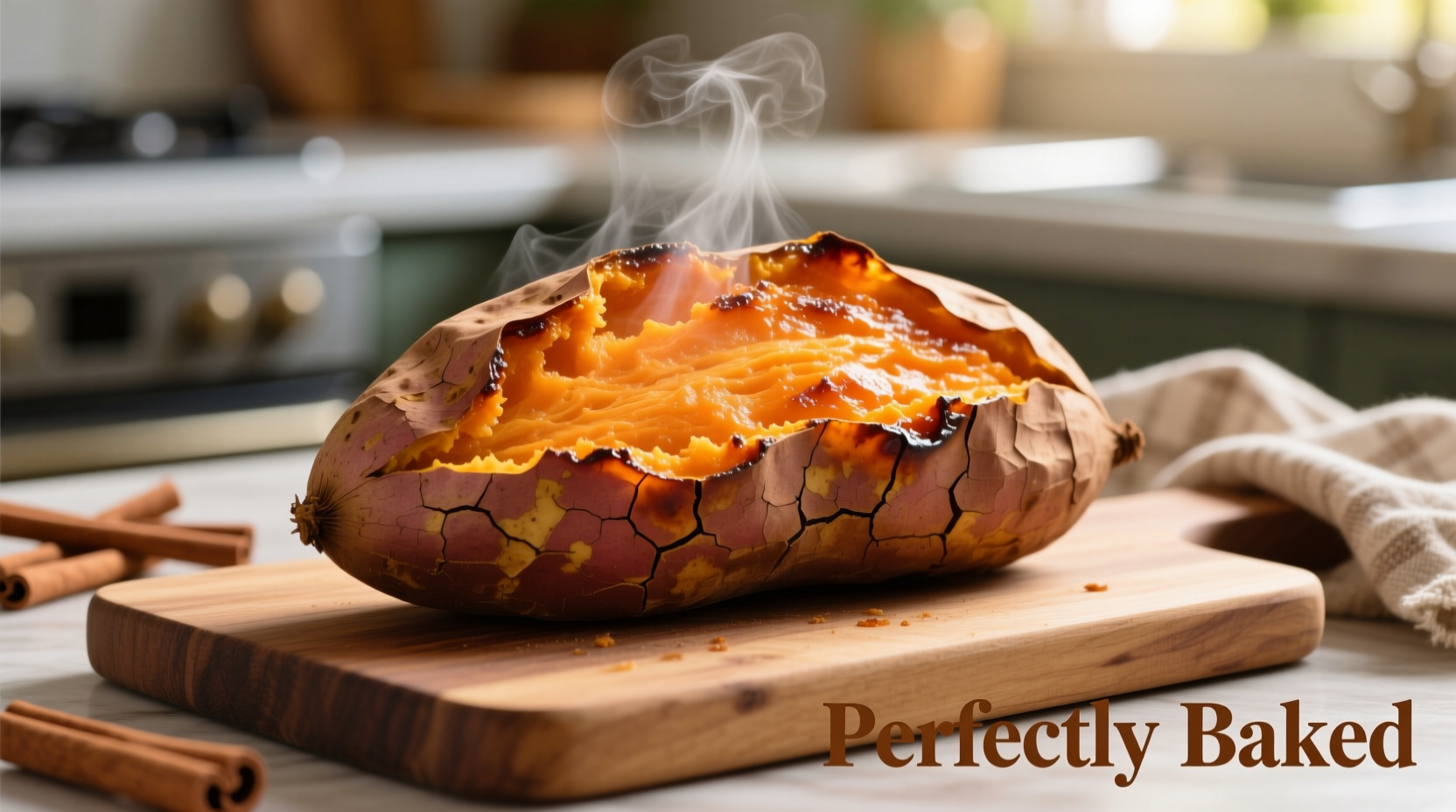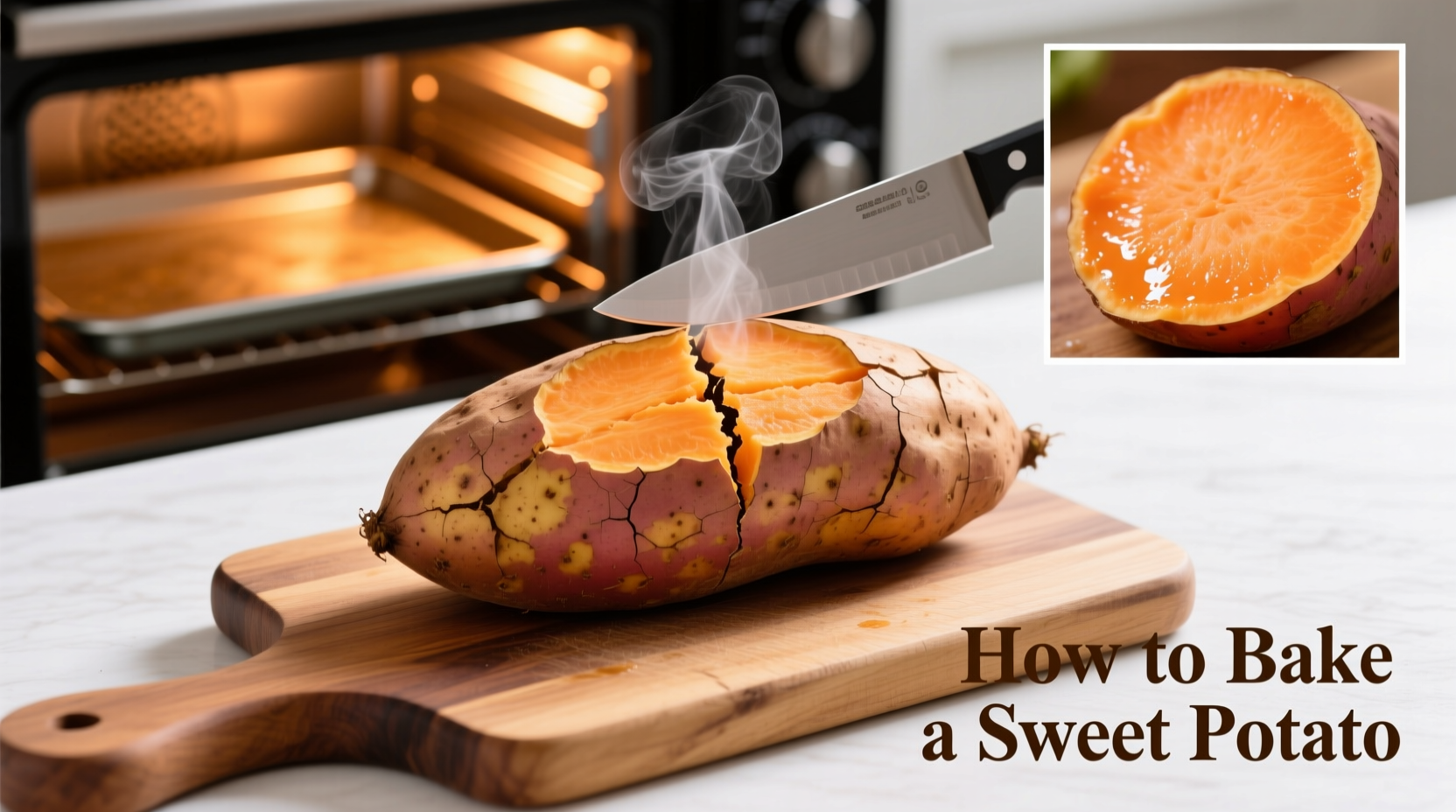There's nothing quite like the sweet, caramelized flavor of a perfectly baked sweet potato. This nutrient-dense root vegetable transforms from humble to heavenly with minimal effort in your oven. Whether you're meal prepping, looking for a healthy side dish, or craving a satisfying snack, baking sweet potatoes delivers maximum flavor with minimal hands-on time.
Selecting Your Sweet Potato Canvas
Not all sweet potatoes are created equal. The most common varieties you'll find are Garnet (dark copper skin, orange flesh), Jewel (similar to Garnet but slightly sweeter), and Hannah (pale yellow skin, cream-colored flesh). For baking, Garnet and Jewel varieties provide that classic sweet potato experience with their vibrant orange flesh rich in beta-carotene.
When selecting sweet potatoes for baking, look for firm specimens without soft spots, cracks, or signs of sprouting. Choose similarly sized potatoes if baking multiple at once to ensure even cooking. According to the USDA Agricultural Marketing Service, sweet potatoes harvested in the fall typically have the highest sugar content and best flavor for baking.
Preparation: Less Is More
Unlike many vegetables, sweet potatoes don't require peeling before baking. The skin contains valuable fiber and nutrients, plus it helps maintain structure during cooking. Simply:
- Rinse thoroughly under cool water
- Scrub gently with a vegetable brush to remove dirt
- Dry completely with a clean towel
- Prick 4-6 times with a fork to allow steam to escape
Skipping the peeling step not only saves time but also prevents the potato from becoming waterlogged. The fork pricks are essential—without them, steam buildup could cause your sweet potato to burst in the oven.

The Baking Process: Temperature and Timing
Place your prepared sweet potatoes directly on the middle oven rack with a baking sheet on the rack below to catch any drips. The ideal baking temperature is 400°F (204°C)—hot enough to caramelize the natural sugars without burning the exterior.
| Sweet Potato Size | Baking Time | Internal Temperature |
|---|---|---|
| Small (4-6 oz) | 35-45 minutes | 205°F (96°C) |
| Medium (6-8 oz) | 45-55 minutes | 205°F (96°C) |
| Large (8-10+ oz) | 55-70 minutes | 205°F (96°C) |
This timing chart, verified by the National Center for Home Food Preservation, shows how size affects baking duration. Never wrap sweet potatoes in foil before baking if you want crispy skin—this creates a steaming effect that results in a boiled texture rather than the caramelized exterior you're after.
Testing for Perfect Doneness
Timing is just a guideline—the real test is texture and temperature. A perfectly baked sweet potato will:
- Feel soft when gently squeezed (use oven mitts!)
- Have slightly wrinkled skin
- Release aromatic, sweet-smelling steam
- Register 205°F (96°C) on an instant-read thermometer
According to food safety guidelines from the FDA, reaching this internal temperature ensures both safety and optimal texture. If you don't have a thermometer, insert a skewer—it should slide in with no resistance. Undercooked sweet potatoes will feel firm and offer resistance to the skewer.
Serving and Storage Solutions
Once baked, let sweet potatoes rest for 5-10 minutes before serving. Slice lengthwise and fluff the flesh with a fork. The natural sweetness means they're delicious on their own, but try these professional chef-approved enhancements:
- A pinch of flaky sea salt to balance sweetness
- A drizzle of pure maple syrup (not pancake syrup)
- A dollop of Greek yogurt instead of butter for added protein
- A sprinkle of cinnamon or smoked paprika
For storage, cooled baked sweet potatoes keep in the refrigerator for up to 5 days in an airtight container. To reheat, place directly on the oven rack at 350°F (177°C) for 15-20 minutes—this preserves texture better than microwaving. According to culinary research from the Culinary Institute of America, reheating in the oven maintains the desirable caramelized qualities better than other methods.
Troubleshooting Common Baking Issues
Problem: Sweet potato is hard after recommended baking time
Solution: Continue baking in 5-minute increments. Dense sweet potatoes often need additional time, especially if your oven runs cool.
Problem: Skin is tough and difficult to eat
Solution: Next time, increase oven temperature by 25°F (14°C). The higher heat creates a more tender skin.
Problem: Potato leaked orange liquid during baking
Solution: This is completely normal! The sugary sap caramelizes and creates delicious crispy bits. Just wipe your baking sheet after cooling.
Nutritional Benefits of Baked Sweet Potatoes
Baking preserves more nutrients than boiling, according to research published in the Journal of Agricultural and Food Chemistry. A medium baked sweet potato provides:
- Over 400% of your daily vitamin A needs
- Significant vitamin C, potassium, and fiber
- Only about 100 calories
- Natural sugars that satisfy sweet cravings healthily
The baking process actually increases the bioavailability of beta-carotene, making it easier for your body to convert to vitamin A. This nutritional powerhouse supports eye health, immune function, and healthy skin.
Advanced Baking Techniques
For restaurant-quality results at home, try these professional techniques:
- Par-baking method: Microwave for 5 minutes before finishing in the oven for faster cooking with perfect texture
- Steam finish: After baking, wrap in foil for 10 minutes to create a moist interior
- Oil-free crisp skin: Lightly rub skin with olive oil before baking for extra-crispy results without foil
Remember that oven temperatures vary, so rely on the internal temperature rather than the clock. Convection ovens typically require 25 degrees less and 25% less time than conventional ovens for baking sweet potatoes.











 浙公网安备
33010002000092号
浙公网安备
33010002000092号 浙B2-20120091-4
浙B2-20120091-4